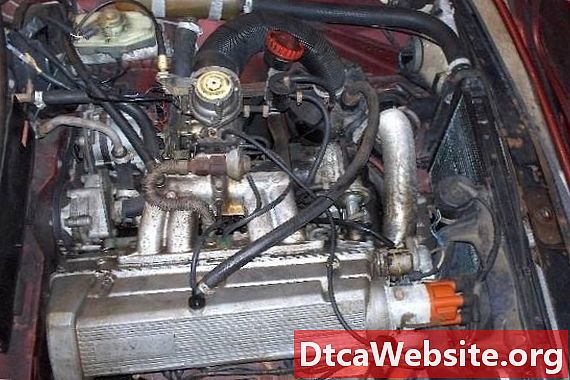
Contenu

A sputtering car engine may be caused by one or more faulty components. The problem could stem from the ignition secondary system, which includes such parts as spark plugs, spark plug wires, distributor cap and rotor. Another possible culprit is a faulty component affecting the air-fuel mixture like a bad oxygen sensor, throttle position sensor or engine temperature sensor. The steps suggested below will help you solve the most common cases of a sputtering car engine.
Step 1
Inspect the components on the secondary ignition system. Look for burned or damaged insulation on spark plug wires. Remove each wire and check for broken wire conductors. A bad spark plug wire will keep a good spark from reaching the cylinder. Remove the spark plugs and check for worn out electrodes and foul plugs. The distributor cap and rotor should be free of cracks and carbon deposits. Replace components as necessary.
Step 2
Check the resistance of the ignition coil using an ohmmeter. If the coil is out of manufacturer specifications, replace it. For more information, see the Tip section at the bottom of this article.
Step 3
Check the condition of the fuel injectors. Start the engine and, using a mechanic stethoscope, listen to each fuel injector as the engine idles. You should hear a clicking sound as the injector opens and closes. Otherwise, you might have a faulty injector. Take your car to an auto shop for further testing if necessary.
Step 4
Turn on the engine and check the fuel spray pattern on the throttle body injector if your particular vehicle has one. Remove the air intake assembly. The spray should be an even and partially atomized V-pattern. A solid, poor or uneven pattern may indicate problems in the injector.
Step 5
Check the condition of the vacuum hoses that connect components to the engine. Look for loose, torn, collapsed or damaged hoses. A vacuum leak affects engine performance. Replace vacuum hoses as necessary.
Step 6
Replace the fuel and air filters at the manufacturer-recommended intervals. A dirty or blocked air or fuel filter will impede engine operation. Check your car owners manual or vehicle service manual for recommended maintenance intervals.
Connect a scan tool to your car computer if it comes equipped with a second-generation On Board Diagnostic (OBD II) system (required on 1996 and newer models in the United States). You may rent this tool or have the diagnostic made for you without charge at many auto parts stores. This test may reveal the condition of such important components as the crankshaft and camshaft position sensors and the knock sensors.
Tip
- Your vehicles service manual provides range specifications and procedures to determine the condition of many engine components. You can buy a service manual at most auto parts stores or consult one for free at most public libraries.
Items you will need
- Ohmmeter
- Mechanic stethoscope
- Scan tool


